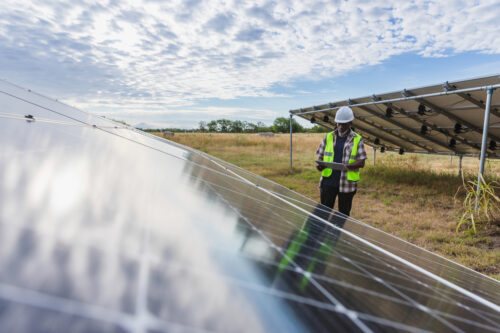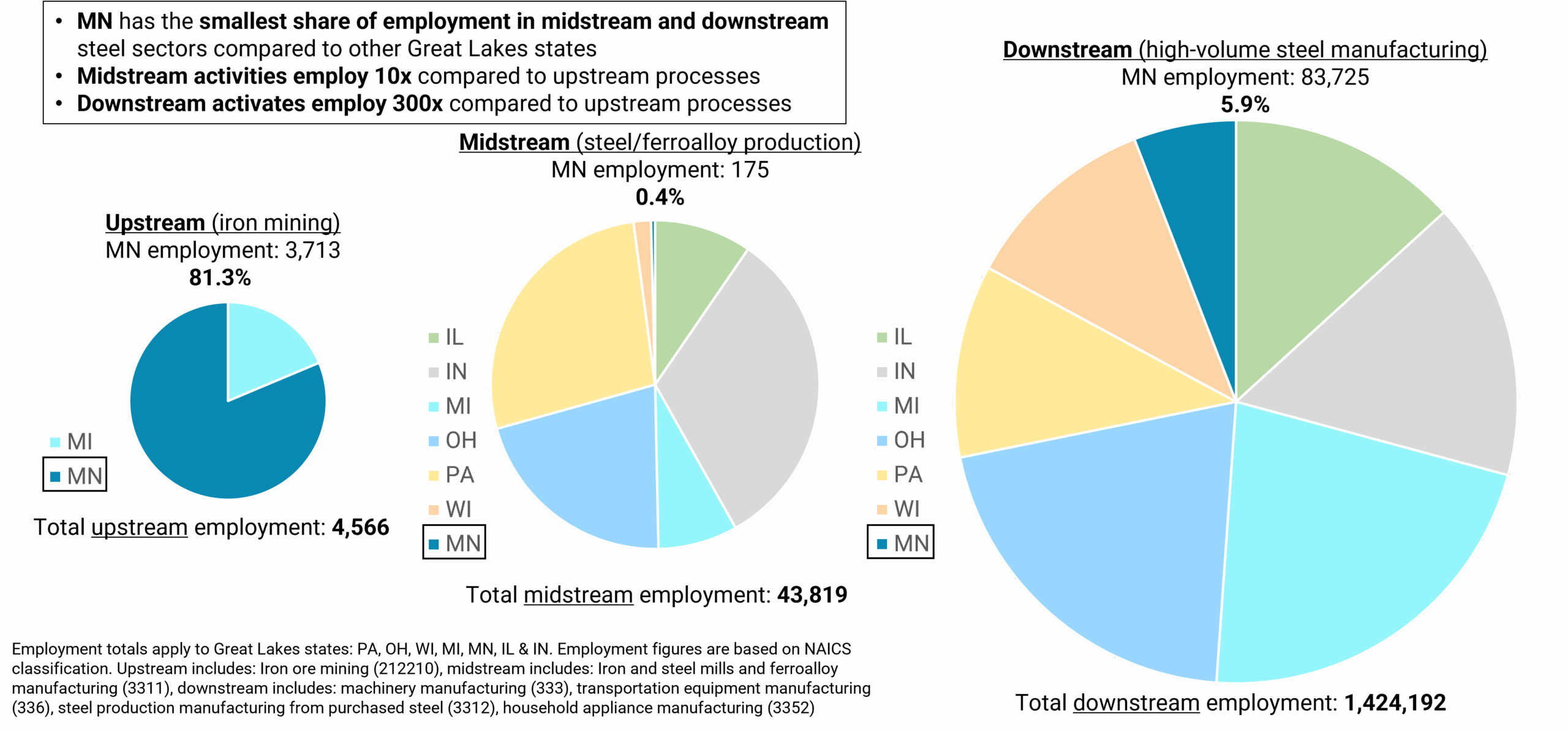A photo of clouds reflected on the solar panels as the mature adult male field technician runs diagnostic tests.

Scaling Clean Energy with Regional Financing Ecosystems
Unlocking capital and delivering local impact in a post-IRA landscape.
Global investment in clean energy has reached record levels, and unprecedented US federal incentives have revealed a strong pipeline of domestic projects. Meanwhile, electricity demand is projected to rise 24 percent by 2030, (an additional 175 gigawatts). For communities, the time to scale reliable, cost-effective energy solutions is now. Without proactive strategies, communities risk missing key opportunities to meet rising demand, support emerging industries like data centers and manufacturing, and stay competitive in the next era of industrial and economic development.
Even before the decline in available federal funding, clean energy savings were not reaching many households, small businesses, or communities due to capital gaps in underserved markets and disconnected finance and economic strategies.
Why? Clean energy projects often struggle to attract capital because risk appetites don’t align, deal sizes are too small or complex, and financial products aren’t built for scale. Capital providers are frequently disconnected from local economic goals, and rigid underwriting criteria too often rule out transformative projects.
Localized strategies can help address these persistent barriers, helping align investment with community needs and ensuring that the clean energy transition delivers inclusive economic benefits. Through regional financing ecosystems, regional banks can coordinate with community lenders, economic development organizations (EDOs), state and local governments, and green banks to support effective, inclusive capital delivery and create channels for scaled investment to flow.
Localized strategies steer to high-feasibility industries and priority projects
RMI’s Community Financing Roadmaps in the Twin Cities and New Orleans highlight how place-based strategies can align clean energy deployment with community priorities, assets, and constraints.
In Minnesota, green steel and transmission upgrades surfaced as competitive investment opportunities, leveraging the Iron Range’s material transport capabilities and skilled workforce with transferrable skills, noted in Exhibit 1. Meanwhile, New Orleans identified green buildings and hydrogen as the highest potential opportunities to spur economic development. These examples affirm that a one-size-fits-all approach doesn’t work. Economic development strategies must reflect each region’s assets, infrastructure, capital access, regulatory environment, and workforce readiness.
Exhibit 1: Minnesota’s workforce opportunities for green steel and transmission upgrades

Still, many pain points are consistent, such as lack of predevelopment capital, deal fragmentation, and underwriting friction. This means that while investment strategies must be local, many solutions developed in one place can be adapted and scaled elsewhere.
Strengthening regional financing ecosystems can meet local demand
Accessing and deploying affordable capital for these high-feasibility local priority projects is a challenge. Capital providers with a vested interest in a place’s economic growth, like regional banks, community development financial institutions (CDFIs), green banks, EDOs, and state and local governments, often work toward similar goals, but in silos. Regional financing ecosystems aim to change that.
By connecting these actors and building collaborative infrastructure, stronger regional financing ecosystems can transform promising ideas into financed deals. This means unlocking capital by understanding the depth of pipeline in a place, decoupling the risks, and aligning risk and return expectations across the portfolio. Public or philanthropic funds might play a catalytic role, absorbing first-loss risk or offering guarantees, while commercial capital can enter where pipelines are deep enough, and risk-adjusted returns align with market expectations. Each institution brings unique assets and faces distinct constraints, but when coordinated, they become greater than the sum of their parts.
Below is a snapshot of how these actors complement each other and what they need to collaborate effectively:
For example, CDFIs bring strong community relationships but often need flexible capital. State and local governments offer funding but rely on private capital to achieve scale. Commercial lenders need de-risked, high-return opportunities, often with quicker payback periods. EDOs, with insight into regional priorities and project pipelines, are key to surfacing opportunities and orienting capital flows toward regional competitiveness outcomes; in turn, EDOs should see these regional financing partners as key to attracting outside investment and amplifying their influence on regional planning and development.

Rather than financing projects one by one, regional financing ecosystems can structure local pipelines into investable portfolios, slicing the risk across tranches that suit different capital appetites. Portfolio structuring enables scale, reduces transaction costs, and offers different capital appetites an entry point into regional clean energy markets — propelling communities toward clean energy and economic success.
Building what’s next
Strong pipelines exist. Capital is available. But the barriers to connecting supply and demand that federal incentives addressed remain intact.
RMI is committed to ensuring that underserved communities and priority projects have access to the financing they need to thrive. To meet the pace and scale of the energy transition, communities need customized strategies and partnerships with capital partners who share risk, offer liquidity, and bring flexible investment tools to the table. In the year ahead, we are continuing to design practical solutions, deliver technoeconomic analysis, and convene cross-sector partners to foster collaboration and dismantle persistent barriers to inclusive, resilient economies.
If you’re looking to unlock local impact and drive economic opportunity through regional financing ecosystems, we invite you to partner with us.
Contact Aaron Brickman, abrickman@rmi.org, and Whitney Mann, wmann@rmi.org, for more information.
